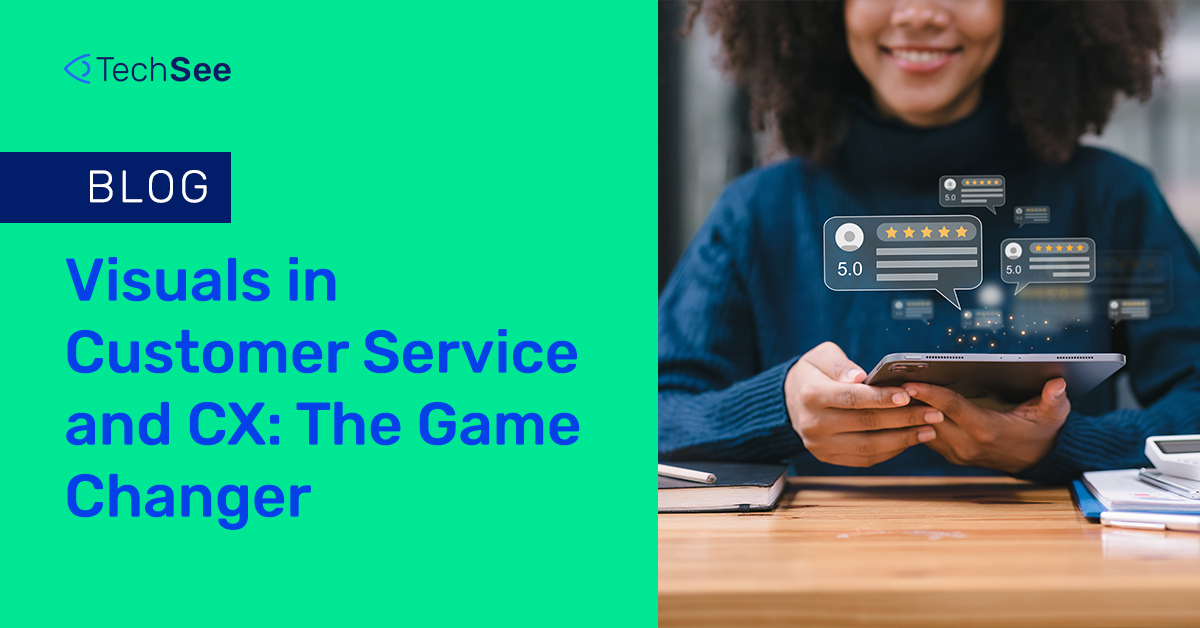Today visuals are revolutionizing customer service and customer experience. There’s a lot of truth in the old saying “a picture is worth a thousand words” – because, as we wrote about in our previous blog post on this topic, visuals really do transform everything. Whether you’re trying to troubleshoot a smart thermostat or set up a new coffee machine, visual communications and visual guidance make the process easier, simpler and faster. With visuals, you have a knowledgeable friend by your side, guiding you through the process, even though they may physically be miles away.
Can You Hear a Smile?
Have you ever sent or received an email, DM or SMS and misread the tone or emotional intent? Text is a terrible, if convenient, means of communication. Vocal communications are slightly more personable. Visuals dial this inter-personal connectivity up to 100. A warm smile can change the entire tone of a conversation, adding warmth and friendliness that words alone can’t convey. To smile is human. We are visual beings, and we relate more meaningfully to people and concepts when we can see them.
Video calls add a lot to the customer experience on their own, allowing remote staff to better understand and relate to the remote user. Visual support tools like AR and AI harness the power of visuals to revolutionize service. They allow customer service agents to use AI to understand exactly what the problem is, while integrated AR tools allow them to show you exactly what the solution is. Images and video streamline the process and create a better customer experience because they eliminate everything that could be lost in translation.
AI Loves Visuals Too
It’s not just humans that love visuals. Visuals play a pivotal role in enhancing the capabilities of Artificial Intelligence (AI). For AI systems, visual data such as images and videos contain a wealth of information and context that text alone cannot provide. This data enables AI to identify patterns, recognize objects, and understand context with high accuracy.
For example, in healthcare, AI-powered medical imaging can often detect anomalies in X-rays or MRIs more precisely than the human eye, leading to earlier and more accurate diagnoses. Similarly, in service, visual AI can easily identify the make and model of a device, helping agents troubleshoot faster. Visual AI can automatically read text, saving agents and customers the painstaking task of orally reciting and repeating long strings of numbers (e.g. MAC address, IP, model number, etc). Visual AI can automate AR visual guidance, automating customer support. And when paired with Generative AI, visual AI can accelerate training processes, average handle time, and reduce cost, while dramatically improving overall performance.
Incorporating visuals into AI is a change that is happening everywhere because it absolutely needs to happen. When Google and OpenAI developed their Generative AI platforms, Gemini and GPT4o, they needed more data and better user interfaces than text alone could provide. This is why they train their models to be multi-modal, using audio, images and text.
“Part of the reason we made Gemini natively multimodal… is so that with audio, video, text, images, and code, when we have multimodality working on the input and output side — and we are training models using all of that,” explained Google CEO Sundar Pichai in an interview with The Verge. “Maybe in the next cycle, that’ll encapsulate a lot more than just today, which is primarily text-based. I think that continuum will shift as we take in a lot more information that way.”
This shift is already happening in the enterprise market as well. AI-driven visual assistance tools, like Sophie AI, use computer vision and real-time processing to analyze and interpret images or videos shared by customers. Visual AI’s ability to provide context that text-based data often lacks allows it to offer more accurate and relevant automated solutions by augmenting and even automating customer service interactions.
The Visual Future is Here
Visual service and visual AI are no longer a far off concept. Over 1,000 enterprise brands have already deployed TechSee and Sophie AI to deliver the future of customer experience, today. They bridge the gap between customers and service providers, making interactions smoother and more intuitive. By leveraging visual technologies, companies are enhancing satisfaction, reducing resolution times, and creating better, positive customer experience.
To see is human, and with visual AI, businesses can align their services with this fundamental aspect of human nature. We’re excited to be at the forefront of this transformation, helping to turn every customer service interaction into a seamless, visually-rich experience.
Let us show you how easy it can be to transform CX with visuals – schedule a demo now.






